Kenneth Price (February 16, 1935–February 24, 2012) was an American artist who specialized in ceramic sculpture. He died on February 24, 2012.
Before earning a BFA in painting from the University of Southern California in 1956, he studied at the Chouinard Art Institute and the Otis Art Institute (now Otis College of Art & Design) in Los Angeles.
In 1957, he completed his studies at Chouinard Art Institute, and in 1959, he graduated with honors from the New York State College of Ceramics at Alfred University, earning an MFA in ceramics. Kenneth Price attended Otis College of Art and Design, where he studied ceramics with Peter Voulkos and was granted a Tamarind Fellowship.
He is most recognized for his abstract shapes made of fired clay, which he creates at his studio. Typically, they are not glazed, but rather meticulously painted with numerous layers of bright acrylic paint and then sanded down to show the hues beneath the layers of bright acrylic paint. Mr. Price spent his time living and working in Venice, California, as well as in Taos, New Mexico.
| Artist | Kenneth Price |
| Born | February 16, 1935, Los Angeles, CA – Los Angeles is a large city in Southern California that serves as the national center for the film and television industries. |
| Died | February 24, 2012, Arroyo Hondo, NM – Arroyo Hondo is a small town in Taos County, New Mexico, United States, located near the town of Taos. |
| Education | NYS College of Ceramics (1959) – It is a statutory college affiliated with the State University of New York at Alfred University in Alfred, New York, and is located in Alfred. Six hundred sixteen students, including 536 undergraduates and eighty graduates, are enrolled at the university. |
| Known For | Ceramic sculptures of a small size that resembled biomorphic blobs, sliced geodes, and fantastical teacups. |
| Nationality | American |
| Spouse | Happy Ward, married in 1968 |
What Was Kenneth Price Known For (What I Discovered)?
Kenneth Price is primarily known for creating ceramic sculptures of a small size resembling colorful biomorphic blobs. His ceramic sculptures are abstract shapes constructed of fired clay and are not glazed. He uses a different approach to finishing his ceramic sculptures by hand-painting them with layers of bright acrylic paints.
What I Discovered
What I discovered is that Price tried out using a cloth or cotton swab soaked in alcohol to work through layers of paint on a piece of art. I find this amazing and innovative. He used this technique to make his work look smoother, and this method also made his work look blurry. During the late 1990s, Price continued to improve his work even more. Like most artists they never stop improving upon their artwork, right? He started dry sanding the surfaces of his acrylic paint which produced the desired results for which he became known.
Where Is Kenneth Price From?
Kenneth Price is from Los Angeles, CA. Los Angeles is a large city in Southern California that serves as the national center for the film and television industries. While at a very young age, Kenneth Price lived on Santa Monica Beach, next to Marion Davies’s home. Then moved to a new house in Pacific Palisades. In 1970 he moved from Los Angeles to Taos, New Mexico.
Who Influenced Kenneth Price?
The progressive ceramist Peter Voulkos, who taught him at Otis College of Art and Design in Los Angeles, and Billy Al Bengston, John Mason, all profoundly affected Kenneth Price. They crossed the gap between “fine art” and “craft” by applying contemporary styles to the medium of ceramics in a way that had never been done before.
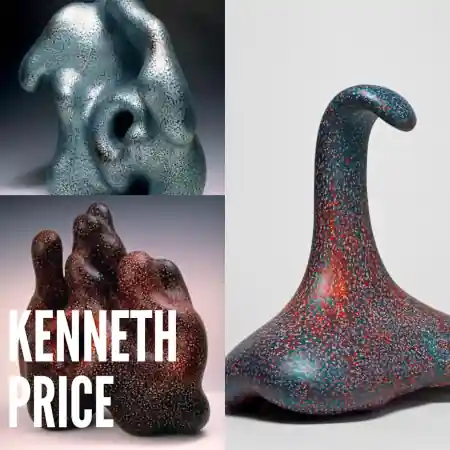
Otis College of Art and Design is a Los Angeles-based private art and design school. It was the city’s first autonomous professional art school, founded in 1918. The main site is located at 9045 Lincoln Boulevard in Westchester, Los Angeles, in the former IBM Aerospace headquarters. The institution, which is accredited by the WSCUC and the National Association of Schools of Art and Design, offers BFA and MFA degrees.
What Techniques Did Kenneth Price Use?
Kenneth Price, who covered his forms with layers of monochromatic color before sanding them down, used a painting method linked with surfboards. This produces a surface that appears to be millefiori glass gone awry, the worn surface of a frequently painted object, or anything viewed via a spectroscope, to name a few inspirations.
Kenneth Price Ceramic Artwork Gallery
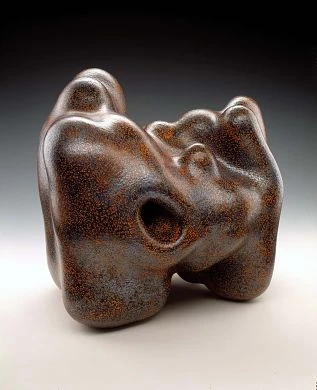
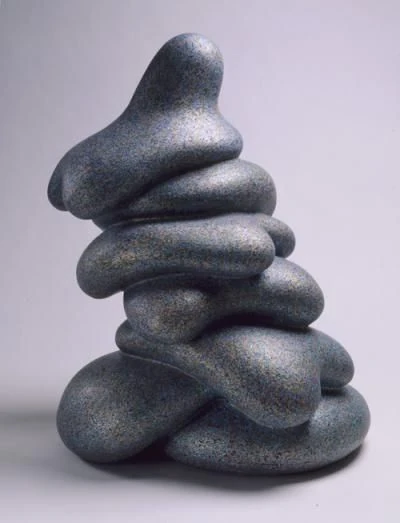
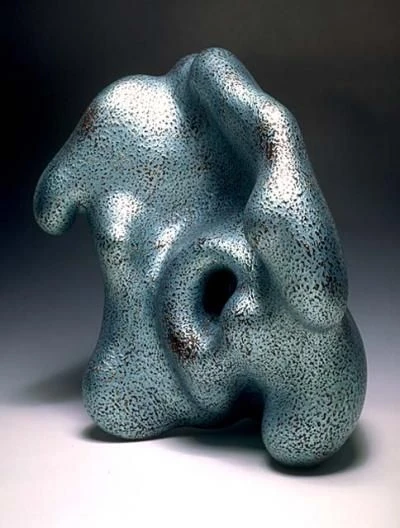


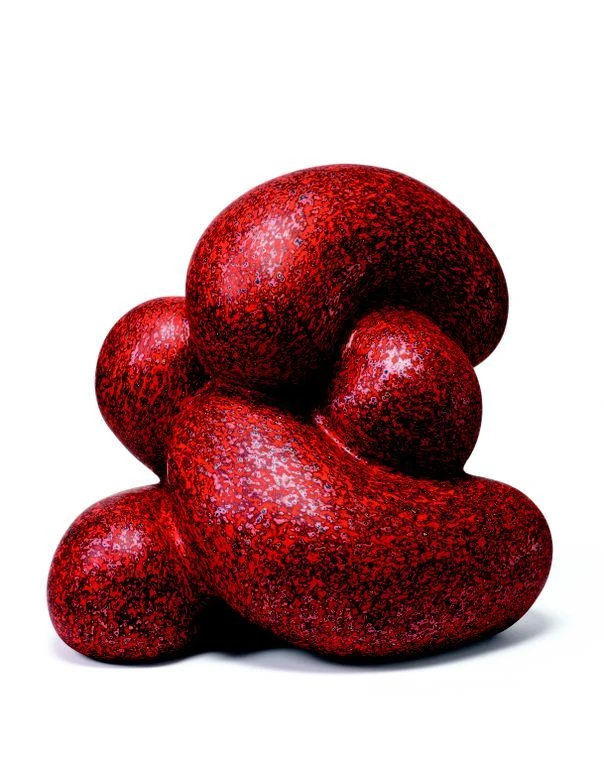


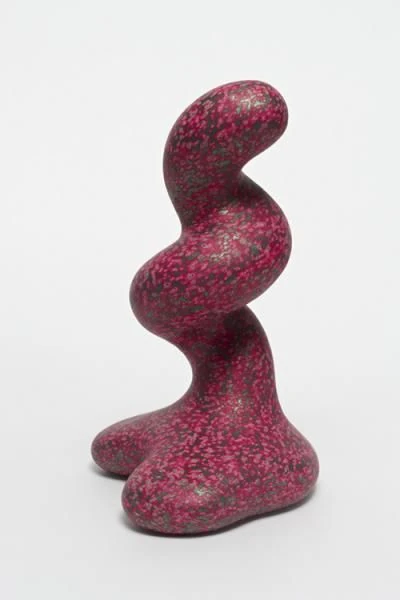
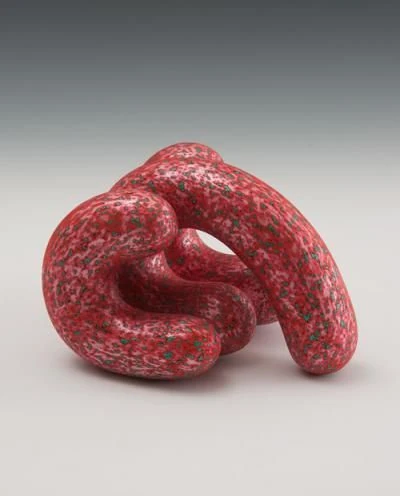


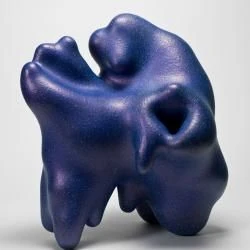
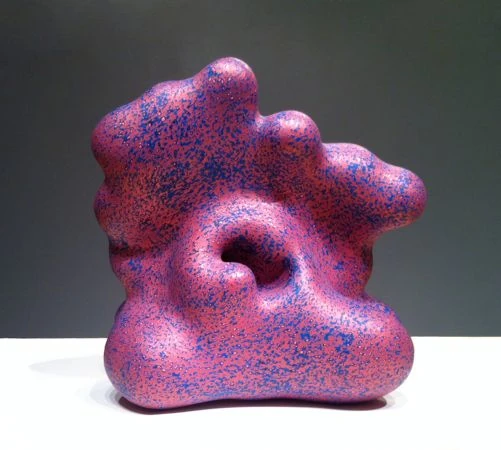
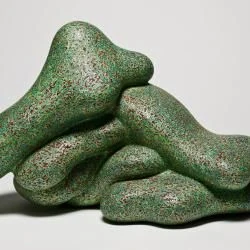
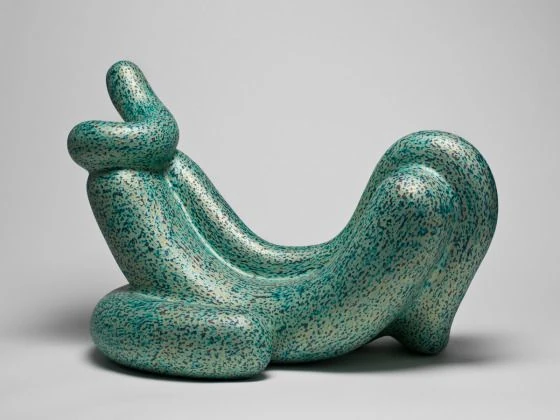
Kenneth Price’s Early Education And Career
Price was born on February 16, 1935, in Los Angeles, California, and reared in the West Hollywood neighborhood. Price’s family relocated into a trailer on Santa Monica Beach for two years in 1937, when he was roughly two years old, near to Marion Davies’ home while constructing a new home in Pacific Palisades.
Price began attending University High School in 1949, and it was around this period that he discovered surfing. Price got a scholarship at Chouinard Art Institute (now known as California Institute of the Arts) in 1952 while still a student at University High School. While there, he studied life painting and cartooning under the tutelage of Tee He.
Price’s early ambitions were to be an artist, and he pursued these goals throughout his life “My dream of becoming an artist has been a lifelong ambition of mine since I was a child. Even as a child, I enjoyed painting and creating small books, cartoons, and other artwork, “He goes on to say.
A pottery course at Santa Monica City College, which Price joined in 1954, prompted him to embrace a formal craft tradition as promoted by Marguerite Wildenhain, which he continued to practice for the rest of his life. He then went on to study at the Chouinard Art Institute in Los Angeles, where he earned his BFA in 1956 before graduating from the University of Southern California.
Price visited the ceramics studio at the Otis Art Institute, where ceramic artist Peter Voulkos was teaching at the time when he was a student at the University of Southern California. Price has frequently cited Voulkos as the single most influential person in his life as a student.
Next the completion of his undergraduate studies at USC, Price spent a portion of the following year as a graduate student at Otis. There, he studied alongside Billy Al Bengston, John Mason, Mike Frimkess, Paul Soldner, Henry Takemoto, and Jerry Rothman, all under the tutelage of Voulkos. Price states the following about the Otis group: “We’ve been credited with breaking away from the crafts hierarchy and substituting so-called ‘complete freedom!’ with a more democratic system. To be more specific, we were a group of individuals who were committed to clay as a medium and wanted to use it in ways that were relevant to our time and region.”
Price transferred from Otis to Alfred University in 1958. (with a six-month detour in the Army Reserve). The reason I went to Alfred was not just to experiment with some low-fire, highly colored glazes, but also to get away from the influence of Voulkos, who had a significant hold on me at the time. At Alfred, Price was able to formulate some of the glazes he desired, utilizing a lead basis, during his tenure there as well. The following year, Price returned to Los Angeles, having earned an MFA in Ceramics from the New York State College of Ceramics at Alfred University the previous year.
Career And Background Of Kenneth Price
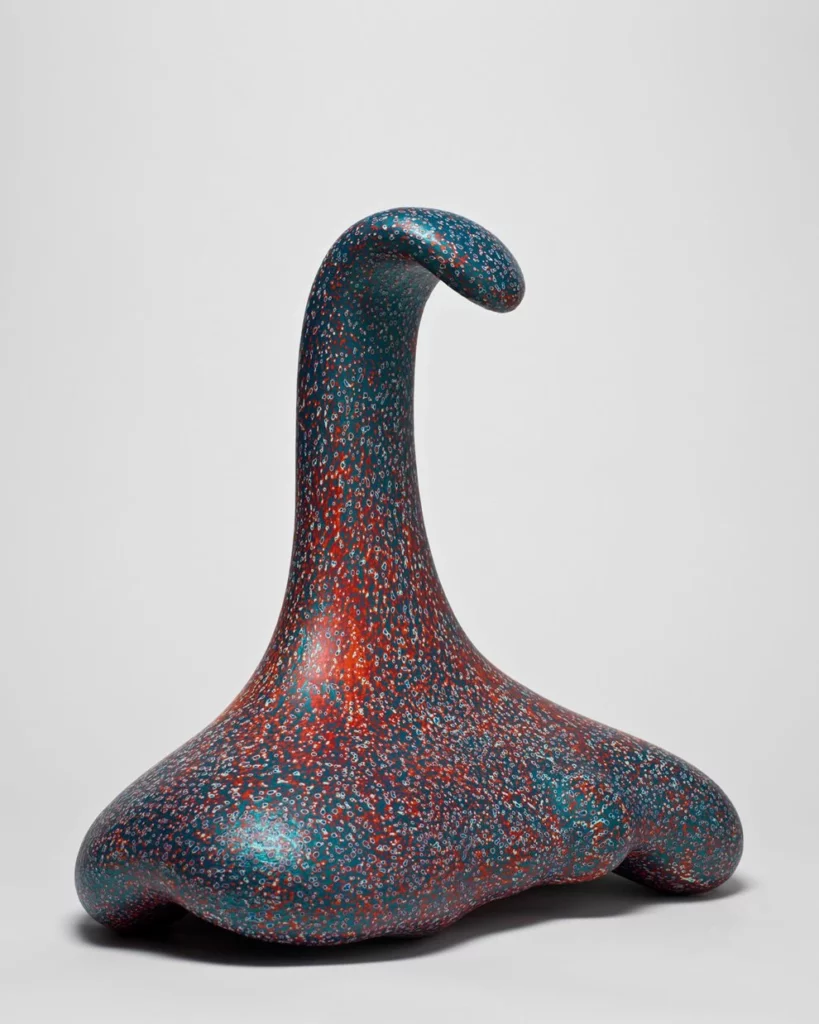
Price recalls his return to Los Angeles and the origins of the Los Angeles art scene as follows: “When I first arrived in Los Angeles in the late 1950s, there was virtually no art scene to speak of. There was an art scene in New York, but there wasn’t one in Los Angeles, at least not that I knew of. There were very few galleries available.
The museum was in the heart of the city, and it was anti-contemporary art. Furthermore, there were only around three viable art publications at the time. The critics from the local newspaper didn’t think much of us. There were no collectors, or at the very least, only a handful. We only made a few sales, and the ones we did make were for very little money. However, the folks I knew were completely dedicated.
I was in the same boat. A lot of things were perplexing me at the time, but not my decision to become an artist. I knew right away that was what I needed to be. In the late 1960s and early 1970s, the entire scene began to emerge: galleries, museums, foundations, and art schools were established, as were a slew of more artists.”
Price’s first solo exhibition was at the Ferus Gallery in 1960, where he quickly established himself as a member of a developing art movement that included artists such as Larry Bell, Billy Al Bengston, John Altoon, John McCracken, Robert Irwin, and Ed Ruscha, among many others. Price’s first solo exhibition was at the Ferus Gallery in 1960, where he quickly established himself as a member of a developing art movement that included artists such as Larry Bell, Billy Al Beng During the brief period that Ferus was open, Price would have three solo exhibitions, and by the mid-1960s, Price had established himself as a fixture on the west coast art scene. Despite spending six months in Japan in 1962, Price would remain in Los Angeles until 1970, when he and his wife, Happy, moved to Taos, New Mexico, to start a new chapter in their lives.
Price’s second solo museum exhibition, Happy’s Curios (1972–77), was held at the Los Angeles County Museum of Art in 1978. The exhibition featured the project that had consumed him for six years, which was dedicated in honor of his wife Happy. This was a large-scale artwork consisting of numerous wood cabinets with open shelves that were filled with brightly colored glazed ceramic pots, plates, bowls, and cups that were inspired by Mexican folk pottery. The installation took up the entire room.
As Price’s professional career progressed, he began to take a more experimental approach to the finishing of his ceramic works. During the summer of 1983, Price and his wife relocated to the coast of Massachusetts, where they remained for the following eight years. During this time period, Price’s work underwent a significant transformation that would last till the end of his career, namely the transition from glazing to acrylic painting.
During this time period, Price experimented with a new technique that entailed priming the fired ceramic sculpture with more than a dozen layers of acrylic paint before firing it. Several professors encourage Price to join the faculty at the University of Southern California following the exhibition Finish Fetish: L.A.’s Cool School, which took place at the Fisher Gallery in 1991. At the University of Southern California, he becomes a professor of ceramics, where he stays for ten years.
In Los Angeles, Price’s son Jackson began to assist him in the studio during this period, and Price experimented with the use of a cloth or cotton swab soaked in alcohol to work through layers of paint, which proved to be effective. This technique enabled the creation of a blurred effect, which resulted in the creation of a new form of smoothness in the work. In the late 1990s, Price developed his method even further by beginning to dry sand the acrylic painted surfaces on which he had previously worked. According to Dave Hickey, he used a technique that he learned from the surfboard workshop. Price was known to paint a painting with as many as a hundred layers of paint, in as many as seven distinct hues, on a single canvas.
Kenneth Price’s Legacy
Price retired from the University of Southern California in 2001 as a professor emeritus. Price and Happy relocated permanently to Taos in 2002, where they constructed a studio adjacent to their home. Price was diagnosed with cancer in 2007 and passed away the following year. He returned to Taos after receiving treatment in Los Angeles.
“Ken Price Sculpture: A Retrospective” has the distinction of being the artist’s final exhibition, which he assisted in the planning of. Price made significant contributions to the preparations for the exhibition during his final two and a half years before his death in February 2012 at the age of 77. The exhibition was organized by the Los Angeles County Museum of Art and designed by Frank Gehry, who had been a friend of the artist since the 1960s.
Price and his son Jackson established Studio B in 2010, where they began to create much larger pieces of art. Prices’ lifetime achievement award from the University of Southern California was presented to him in 2011.
Ken Price passed away on February 24, 2012, at his residence in Taos, New Mexico.
Price was the subject of a 50-year retrospective that opened at the Los Angeles County Museum of Art in September 2012 and traveled to the Nasher Sculpture Center and the Metropolitan Museum of Art in New York the following month. “Zizi,” an installation by the artist from 2011, is on exhibit at the museum’s Ahmanson Building foyer as a tribute to the artist. “Ken Price Sculpture: A Retrospective” has the distinction of being the artist’s final exhibition, which he assisted in the planning of.
Exhibitions (and Catalogue) Of Kenneth Price
Price made significant contributions to the preparations for the exhibition during his final two and a half years before his death in February 2012 at the age of 77. The exhibition was organized by the Los Angeles County Museum of Art and designed by Frank Gehry, who had been a friend of the artist since the 1960s.
Price was also the subject of a work on paper retrospective titled ‘Slow and Steady Wins the Race, Works on Paper, 1962–2010’ that took place in September 2013 at the Albright–Knox Art Gallery, Drawing Center, and the Harwood Museum of Art in Buffalo, New York.
- 1960
- Ferus Gallery, Los Angeles
- 1961
- Ferus Gallery, Los Angeles
- 1964
- Ferus Gallery, Los Angeles
- 1968
- Kasmin Gallery, London
- 1969
- Kenneth Price Cups, Whitney Museum of American Art, New York
Mizuno Gallery, Los Angeles
- Kenneth Price Cups, Whitney Museum of American Art, New York
- 1970
- Kasmin Gallery, London
Ken Price: Figurine Cups, Gemini G.E.L., Los Angeles
- Kasmin Gallery, London
- 1971
- David Whitney Gallery, New York. Traveled to Mizuno Gallery, Los Angeles; Galerie Neuendorf, Cologne, Germany; and Galerie Neuendorf, Hamburg, Germany
- 1972
- Fendrick Gallery, Washington D.C.
Ken Price: Interior Series, Gemini G.E.L., Los Angeles (brochure)
- Fendrick Gallery, Washington D.C.
- 1973
- Galerie Neuendorf, Hamburg, Germany
Nicholas Wilder Gallery, Los Angeles
- Galerie Neuendorf, Hamburg, Germany
- 1976
- Ken Price, The Greenberg Gallery, St. Louis, Missouri
James Corcoran Gallery, Los Angeles
- Ken Price, The Greenberg Gallery, St. Louis, Missouri
- 1978
- Ken Price: Happy’s Curios, Los Angeles County Museum of Art, Los Angeles
Gallery of Contemporary Art, Taos, New Mexico
- Ken Price: Happy’s Curios, Los Angeles County Museum of Art, Los Angeles
- 1979
- Cups, Plates, and Drawings, Texas Gallery, Houston
Hansen-Fuller Gallery, San Francisco
Willard Gallery, New York
- Cups, Plates, and Drawings, Texas Gallery, Houston
- 1980
- Betsy Rosenfield Gallery, Chicago
Kenneth Price: Architectural Cups 1972–1974, Visual Arts Museum, New York
Ceramic Sculptures, Texas Gallery, Houston
Ken Price: Selections from Happy’s Curios, Contemporary Arts Museum, Houston
James Corcoran Gallery, Los Angeles
- Betsy Rosenfield Gallery, Chicago
- 1982
- Images and Objects: Works by Kenneth Price, Santa Barbara Museum of Art, Santa Barbara, California
Willard Gallery, New York
James Corcoran Gallery, Los Angeles
- Images and Objects: Works by Kenneth Price, Santa Barbara Museum of Art, Santa Barbara, California
- 1983
- Ken Price, Leo Castelli Gallery, New York
- 1984
- New Ceramics, Texas Gallery, Houston
- 1985
- Willard Gallery, New York, New York
Betsy Rosenfield Gallery, Chicago
- Willard Gallery, New York, New York
- 1986
- Willard Gallery, New York, New York
Fuller Goldeen Gallery, San Francisco
- Willard Gallery, New York, New York
- 1987
- James Corcoran Gallery, Los Angeles
- 1989
- Ken Price, The Greenberg Gallery, St Louis, Missouri. Traveled to Rena Bransten Gallery, San Francisco, and Georges Lavrov Gallery, Paris
- 1990
- Sena West Gallery, Santa Fe, New Mexico
- 1991
- James Corcoran Gallery, Los Angeles
- 1992
- Ken Price, The Menil Collection, Houston
Ken Price Walker Art Center, Minneapolis, Minnesota
James Corcoran Gallery, Los Angeles
Ken Price, Charles Cowles Gallery, New York
- Ken Price, The Menil Collection, Houston
- 1994
- Ken Price: Ceramic Sculpture & Drawings, Harwood Foundation Museum of the University of New Mexico, Taos, New Mexico
Recent Sculpture, L.A. Louver Gallery, Venice, California
Ken Price: Career Survey, Franklin Parrasch Gallery, New York
- Ken Price: Ceramic Sculpture & Drawings, Harwood Foundation Museum of the University of New Mexico, Taos, New Mexico
- 1995
- Ken Price: A Selected Survey 1960–1995, Beaver College Art Gallery, Glenside, Pennsylvania
- 1996
- Ken Price: Geometric Works 1972–1983, Franklin Parrasch Gallery, New York
Ken Price, L.A. Louver, Venice, California
- Ken Price: Geometric Works 1972–1983, Franklin Parrasch Gallery, New York
- 1997
- Ken Price: New Work, L.A. Louver Gallery, Venice, California
Ken Price, Johnson County Community College Gallery of Art, Overland Park, Kansas (brochure)
Ken Price: Recent Work, Franklin Parrasch Gallery, New York
- Ken Price: New Work, L.A. Louver Gallery, Venice, California
- 1998
- Ken Price, Franklin Parrasch Gallery, New York
Ken Price: Selected Sketches and Drawings of Early Cups and Geometric Sculptures, Franklin Parrasch Gallery, New York
Ken Price_Sculpture, April 30-June 6, Hill Gallery Birmingham, Michigan
- Ken Price, Franklin Parrasch Gallery, New York
- 1999
- Ken Price, May 13 – June 19, L.A. Louver Gallery, Venice, California
Ken Price: Works on Paper, 1966–1991, 871 Fine Arts, San Francisco
Ken Price: Sculptures and Drawings, James Kelly Contemporary, Santa Fe, New Mexico
- Ken Price, May 13 – June 19, L.A. Louver Gallery, Venice, California
- 2000
- Ken Price: Lumps, Bumps, Eggs, and Specimens: Works from the 1960s, Franklin Parrasch Gallery, New York
- 2001
- Ken Price: New Work, Franklin Parrasch Gallery, New York
Ken Price: New Work, L.A. Louver Gallery, Venice, California
Ken Price: Recent Drawings, Off Main Gallery, Santa Monica, California
Recent Sculpture, Klein Art Works, Chicago
- Ken Price: New Work, Franklin Parrasch Gallery, New York
- 2002
- Ken Price: New Work, Rebecca Ibel Gallery, Columbus, Ohio
Ken Price: Small is Beautiful, University Art Museum, California State University, Long Beach, California
Ken Price, L.A. Louver Gallery, Venice, California
- Ken Price: New Work, Rebecca Ibel Gallery, Columbus, Ohio
- 2003
- Ken Price, Matthew Marks Gallery, New York
- 2004
- Ken Price: Works on Paper, Matthew Marks Gallery, New York
Ken Price Sculpture and Drawings 1994–2004, Chinati Foundation, Marfa, Texas
Ken Price: Sculpture, L.A. Louver Gallery, Venice, California
- Ken Price: Works on Paper, Matthew Marks Gallery, New York
- 2005
- Ken Price: Works on Paper, L.A. Louver Gallery, Venice, California
Ken Price: Selected Work, Frank Lloyd Gallery, Santa Monica, California
Ken Price: Small Scale Sculpture, James Kelly Contemporary, Santa Fe, New Mexico
Ken Price Sculpture from 2004, L.A. Louver Gallery, Venice, California
- Ken Price: Works on Paper, L.A. Louver Gallery, Venice, California
- 2006
- Ken Price: Early Cups and Related Works on Paper, Franklin Parrasch Gallery, New York
Ken Price, Matthew Marks Gallery, New York
- Ken Price: Early Cups and Related Works on Paper, Franklin Parrasch Gallery, New York
- 2007
- Ken Price: New Work, Xavier Hufkens, Brussels
Ken Price: Sculpture, Matthew Marks Gallery, New York
- Ken Price: New Work, Xavier Hufkens, Brussels
- 2008
- Ken Price: Prints and Ceramics, 1970 – 2005, Gemini G.E.L. at Joni Moisant Weyl, New York
Ken Price: Works from the Late ’80s, Franklin Parrasch Gallery, New York
Ken Price, L.A. Louver Gallery, Venice, California
- Ken Price: Prints and Ceramics, 1970 – 2005, Gemini G.E.L. at Joni Moisant Weyl, New York
- 2009
- The Art Show 2009: Ken Price, Matthew Marks Gallery at the Armory, New York
- 2010
- Ken Price, Matthew Marks Gallery, New York
Ken Price: Collected Writings and Ephemera, Franklin Parrasch Gallery, New York
Ken Price: Sculpture and Drawings, Nyehaus, New York
- Ken Price, Matthew Marks Gallery, New York
- 2012-13
- Ken Price Sculpture: A Retrospective, LACMA; travels to Nasher Sculpture Center, Dallas, and Metropolitan Museum of Art, New York
Kenneth Price’s Public Collections
His work can be found in the permanent collections of several museums, including the Whitney Museum of American Art, the Santa Barbara Museum of Art, the Museum of Modern Art, the University of Michigan Museum of Art, the Norton Simon Museum, and the Smithsonian American Art Museum.
- Albright–Knox Art Gallery, Buffalo, NY
- Albuquerque Museum, Albuquerque, NM
- American Craft Museum, New York, NY
- Art Institute of Chicago, Chicago, IL
- Art Museum of South Texas, Corpus Christi, TX
- Carnegie Museum of Art, Pittsburgh, PA
- Cincinnati Art Museum, Cincinnati, OH
- Crocker Art Museum, Sacramento, CA
- Dallas Museum of Art, Dallas, TX
- Denver Art Museum, Denver, CO
- Everson Museum of Art, Syracuse, NY
- Harwood Museum of Art, Taos, NM
- Hirshhorn Museum and Sculpture Garden, Washington, D.C.
- Lannan Foundation, Los Angeles, CA
- Los Angeles County Museum of Art, Los Angeles, CA
- Menil Collection, Houston, TX
- Metropolitan Museum of Art, New York, NY
- Minneapolis Institute of Art, Minneapolis, MN
- Mint Museum, Charlotte, NC
- Museum of Contemporary Art, Los Angeles, CA
- Museum of Modern Art, New York, NY
- Museum Overholland, Nieuwersluis, Netherlands
- National Gallery of Art, Washington, D.C.
- Nelson-Atkins Museum of Art, Kansas City, MO
- Oakland Museum of California, Oakland, CA
- Philadelphia Museum of Art, Philadelphia, PA
- Renwick Gallery, Smithsonian Museum of American Art, Washington, D.C.
- Rhode Island School of Design Museum, Providence, RI
- Saint Louis Art Museum, St. Louis, MO
- San Francisco Museum of Modern Art, San Francisco, CA
- Santa Barbara Museum of Art, Santa Barbara, CA
- Schein-Joseph International Museum of Ceramic Art, Alfred University, Alfred, NY
- Seattle Art Museum, Seattle, WA
- Speed Art Museum, Louisville, KY
- Stedelijk Museum, London, England
- Walker Art Center, Minneapolis, MN
- Whitney Museum of American Art, New York, NY
- Worcester Art Museum, Worcester, MA
Conclusion And Summary
Kenneth Price was an American ceramic artist known for his intricately painted clay sculptures. He was born on February 24, 1935, and enrolled in art classes early in his life. Price received both a BFA degree and an MFA degree, which helped him transform traditional ceramics into a new form of art.
In the decades following World War II, Price’s work began to attain international stature, expanding orthodox definitions of ceramics. His iconic works include the Japanese Tree Frog Cup and the Re-Scripting Walt Whitman series, which features erotic wit and complex narratives.
Price’s work is highly valued in the art world, and he was an inspiration to many artists, including Andy Warhol. He was also an avid surfer and spent many years living in California.
Unfortunately, Price passed away in 2012 due to throat cancer. Despite this, his legacy lives on, and his work continues to be studied and admired. For more information on Kenneth Price, including his art and life, please visit the Walt Whitman Archive and Harvey Mudd College websites.
Popular Ceramic Artists
Reference





